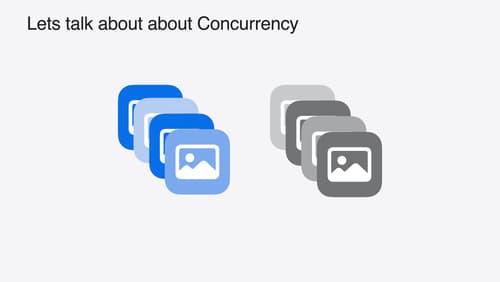How do I encourage Apple's Vision code to use its pool of IOSurfaces instead of creating new ones?
Asked on 2024-08-02
1 search
To encourage Apple's Vision code to use its pool of IOSurfaces instead of creating new ones, you should focus on optimizing memory management and reducing unnecessary allocations. Here are some relevant tips from the sessions:
-
Managing Autorelease Pool Growth: In the session Analyze heap memory, it is suggested to define a nested local autorelease pool scope to narrow down object lifetimes. This can help in reducing the accumulation of objects and the need for additional memory pages.
-
Concurrency and Task Management: In the session Discover Swift enhancements in the Vision framework, it is recommended to use concurrency to process multiple images efficiently. Limiting the number of concurrent tasks can help manage memory usage better.
-
Efficient Texture Use: In the session Optimize your 3D assets for spatial computing, optimizing the use of texture memory is discussed. Efficiently packing textures and using compression can help reduce memory footprint.
By implementing these strategies, you can help ensure that the Vision framework reuses IOSurfaces more effectively, reducing the need to create new ones.

Analyze heap memory
Dive into the basis for your app’s dynamic memory: the heap! Explore how to use Instruments and Xcode to measure, analyze, and fix common heap issues. We’ll also cover some techniques and best practices for diagnosing transient growth, persistent growth, and leaks in your app.

Optimize your 3D assets for spatial computing
Dive into an end-to-end workflow for optimized 3D asset creation. Discover best practices for optimizing meshes, materials, and textures in your digital content creation tool. Learn how to harness shader graph, baking, and material instances to enhance your 3D scene while optimizing performance. Take advantage of native tools to work more effectively with your assets and improve your app’s performance.

Discover Swift enhancements in the Vision framework
The Vision Framework API has been redesigned to leverage modern Swift features like concurrency, making it easier and faster to integrate a wide array of Vision algorithms into your app. We’ll tour the updated API and share sample code, along with best practices, to help you get the benefits of this framework with less coding effort. We’ll also demonstrate two new features: image aesthetics and holistic body pose.
